Prices in AUD. Shipping worldwide. Flat rate $8 postage per order within Australia. International by weight calculated at checkout. Read full terms.
-
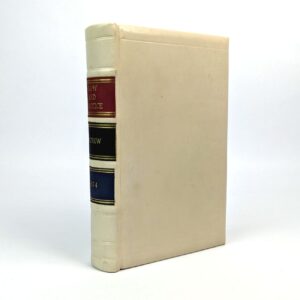
The Law and Practice Relating to Letters Patent for Inventions
AU$150.00 Read MoreAdd to cartWilliam Fischer Agnew
London: Wiley and Sons, 1874.Together with Notices of the Patent Laws in Force in the Principal Foreign States and in the Colonies. With an Appendix Containing the Statutes, Rules, Etc.
-
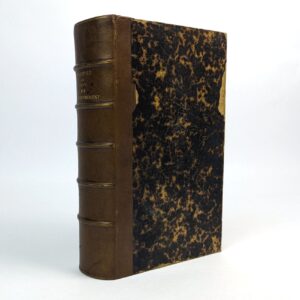
E’tude Medico-Legale et Clinique sur L’Empoisonnement
AU$200.00 Read MoreAdd to cartAmbroise Tardieu; Z. Roussin
Paris: Librairie J.-B. Bailliere et Fils, 1875.Medico-Legal and Clinical Study on Poisoning.
-
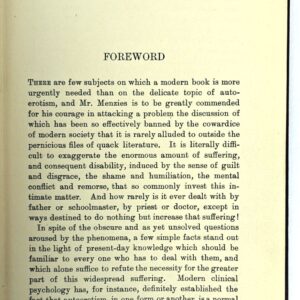
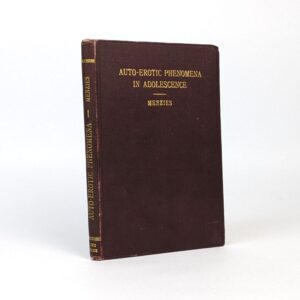
Autoerotic Phenomena in Adolescence: An Analytical Study of Psychology and Psychopathology of Onanism
AU$1,000.00 Read MoreAdd to cartK. Menzies
London: H. K. Lewis, 1919.Early 20th century psychoanalytical study of masturbation written for a lay audience. With a foreword by Dr. Ernest Jones. An important text in helping to normalise healthy self-pleasure and provide a balanced approach to unhealthy behaviours in the early 20th century.
-

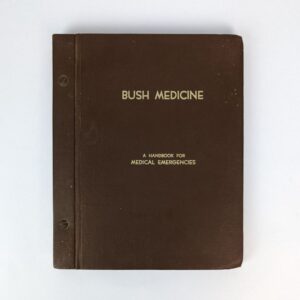
Bush Medicine: A Practical Handbook for Managing Serious Illnesses and Accidents in the Outback
AU$400.00 Read MoreAdd to cartVictor H. Webster
Tennant Creek: Jackhammer Press, No date.Victor H. Webster (1905-1980) was a member of the Northern Territory Legislative Council for Tennant Creek from 1947 to 1950. During this time he published Bush Medicine, an early Northern Territory medical handbook for surviving medical emergencies in the remote outback. Includes a chapter ‘Some Remarks on Sickness in Natives’.
-
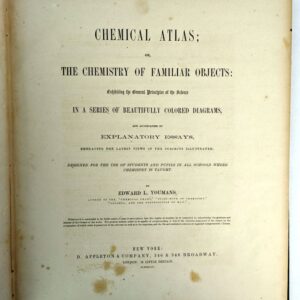
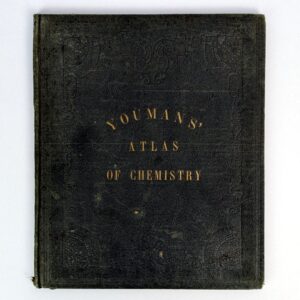
Chemical Atlas; or, The Chemistry of Familiar Objects
AU$8,000.00 Read MoreAdd to cartEdward L. Youmans
New York: D. Appleton & Co., 1856.Exhibiting the General Principles of the Science in a Series of Beautifully Colored Diagrams, and Accompanied by Explanatory Essays, Embracing the Latest Views of the Subjects Illustrated. Edward Livingston Youmans (1821-1887) was an American scientific writer, editor, and lecturer, and founder of Popular Science magazine. Youmans’ Chemical Atlas is one of the 19th century’s pioneering publications of science popularization, with striking colour plates both conveying information and capturing the imagination, and was featured in the William Reese exhibition Stamped with a National Character: Nineteenth Century American Color Plate Books: “This chemistry textbook was a pioneering publication in the use of color to convey quantitative information”. There are recorded printings each year between 1854 and 1857. This 1856 edition being the third year of printing and from the collection of the renowned neurologist, author, and educator Dr. Oliver Sacks, with his bookplate laid in.
-
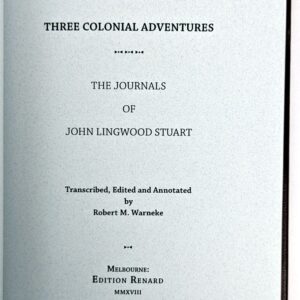
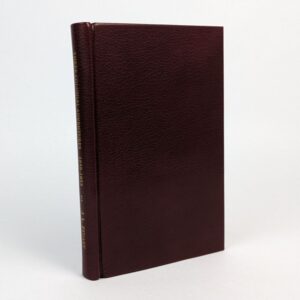
Three Colonial Adventures
AU$285.00 Read MoreAdd to cartJohn Lingwood Stuart
Melbourne: Edition Renard, 2018.One of the Deluxe Edition of 70 numbered copies in full leather (from a total edition of 215). John Lingwood Stuart’s three manuscript journals, here collected under the title THREE COLONIAL ADVENTURES, have never before been published. Written in 1849, 1851, and 1852-53 they provide a fascinating insight into the migration of a young man from England to Adelaide in South Australia and his subsequent adventures in his new land. His first journal comprises an interesting shipboard diary of his voyage to Australia on board the Minerva. Whilst not a particularly remarkable voyage in itself, his journal captures beautifully the experience of a migrant in the mid-nineteenth century, conveying with gentle humour just what it was like to be a passenger in those times, the routine, the duties, the boredom, the occasional excitement, the wildlife observed, the sickness and (fortunately few) deaths, and of course, the weather. His second journal is much more unusual and historically important. In 1851 Stuart signed on to a sealing expedition in South Australian and Kangaroo Island waters on the cutter Jane and Emma and he gives a detailed daily account of the progress of the voyage, the places visited, seals killed, skins and oil obtained, other wildlife observed, and encounters with sailors, settlers, and Aborigines. Following his return to Adelaide, in 1852 Stuart embarked on another expedition, this time overland by bullock dray to the diggings at the Bendigo goldfields. Again, historically important, and one of the few detailed journals of the time, Stuart recounts his adventures following the Murray and Loddon Rivers including comments on the squatters and Aboriginal people encountered along the way, the difficulties of travelling with bullocks and much else. Arriving at Bendigo he and his companions spent a few days investigating various gullies before commencing digging in Geelong Gully where almost immediately they found gold. All three journals have dated daily entries and have been meticulously transcribed, but the wealth of interesting information has been hugely supplemented by the detailed and informative footnotes and the account of Stuart’s life (he subsequently became a mining engineer) by Robert M. Warneke. In addition Robert has provided maps of the two Australian journeys, carefully reconciling the places mentioned by Stuart to the geography; a detailed analysis of the seal catch and notes to the wildlife encountered in all three journeys; and an extensive bibliography of the references used. A detailed description of the original journals is provided by Julien Renard. An entirely new and original work, never before published, elegantly typeset with sparing and judicious use of colour to enhance the text and capture the flavour of the manuscript originals, and the volumes have been finely hand bound by Peter Lewis.
-
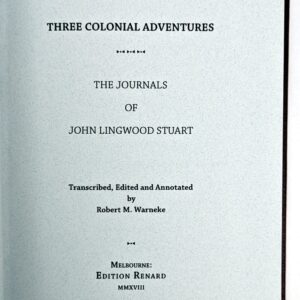
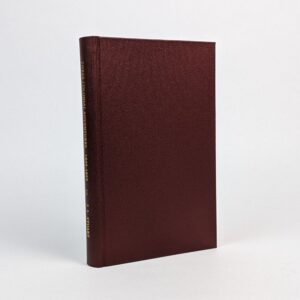
Three Colonial Adventures
AU$175.00 Read MoreAdd to cartJohn Lingwood Stuart
Melbourne: Edition Renard, 2018.One of the Standard Edition of 100 numbered copies (from a total edition of 215). John Lingwood Stuart’s three manuscript journals, here collected under the title THREE COLONIAL ADVENTURES, have never before been published. Written in 1849, 1851, and 1852-53 they provide a fascinating insight into the migration of a young man from England to Adelaide in South Australia and his subsequent adventures in his new land. His first journal comprises an interesting shipboard diary of his voyage to Australia on board the Minerva. Whilst not a particularly remarkable voyage in itself, his journal captures beautifully the experience of a migrant in the mid-nineteenth century, conveying with gentle humour just what it was like to be a passenger in those times, the routine, the duties, the boredom, the occasional excitement, the wildlife observed, the sickness and (fortunately few) deaths, and of course, the weather. His second journal is much more unusual and historically important. In 1851 Stuart signed on to a sealing expedition in South Australian and Kangaroo Island waters on the cutter Jane and Emma and he gives a detailed daily account of the progress of the voyage, the places visited, seals killed, skins and oil obtained, other wildlife observed, and encounters with sailors, settlers, and Aborigines. Following his return to Adelaide, in 1852 Stuart embarked on another expedition, this time overland by bullock dray to the diggings at the Bendigo goldfields. Again, historically important, and one of the few detailed journals of the time, Stuart recounts his adventures following the Murray and Loddon Rivers including comments on the squatters and Aboriginal people encountered along the way, the difficulties of travelling with bullocks and much else. Arriving at Bendigo he and his companions spent a few days investigating various gullies before commencing digging in Geelong Gully where almost immediately they found gold. All three journals have dated daily entries and have been meticulously transcribed, but the wealth of interesting information has been hugely supplemented by the detailed and informative footnotes and the account of Stuart’s life (he subsequently became a mining engineer) by Robert M. Warneke. In addition Robert has provided maps of the two Australian journeys, carefully reconciling the places mentioned by Stuart to the geography; a detailed analysis of the seal catch and notes to the wildlife encountered in all three journeys; and an extensive bibliography of the references used. A detailed description of the original journals is provided by Julien Renard. An entirely new and original work, never before published, elegantly typeset with sparing and judicious use of colour to enhance the text and capture the flavour of the manuscript originals, and the volumes have been finely hand bound by Peter Lewis.
-
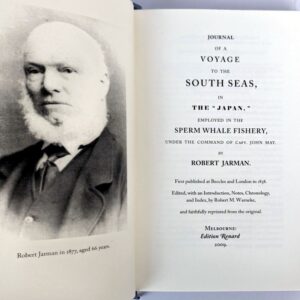

Journal of a Voyage to the South Seas, in the Japan,
AU$625.00 Read MoreAdd to cartRobert Jarman
Melbourne: Edition Renard, 2009.employed in the Sperm Whale Fishery, under the Command of Capt. John May. First published at Beccles and London in 1838. Edited, with an Introduction, Notes, Chronology, and Index, by Robert M. Warneke, and faithfully reprinted from the original. Special limited edition of 30 numbered copies within the overall limitation of 200 copies for sale. A new edition of the very rare account first published in two issues in 1838 and until now never reprinted – see FORBES 1104, also BAGNALL 2685 and FERGUSON 2526 (and 2526a). Robert Jarman, the son of a printer at Beccles, joined the crew as a young man of twenty years on a whaling voyage to the South Seas in 1831. During the next three to four years young Robert’s forecastle jottings were transformed into a lively and well-crafted tale. The primary theme is the hard, unrelenting search for whales, reflected in Jarman’s methodical recording of encounters with other whalers and elaborated with graphic descriptions of the excitements and dangers of whaling with the inevitable accidents, injuries, and tragic deaths. After cruising the Japan Sea, the ship reached the Hawaiian Islands at the end of October 1832 and anchored at Honolulu. “The author noted 18 whalers in port. He describes the harbor and the method by which ships were towed in, and the Honolulu Fort, and the town and its native people” (Forbes). He tells also of surviving gales and near disaster when the Japan was dismasted in a hurricane, which forced the stricken ship to Sydney for extensive repairs. Jarman gives an interesting account of Sydney, with perceptive comments on convicts and their management and the Aboriginals and their customs including the use of the boomerang. Subsequently the ship cruised around Rotuma, the Fiji Islands and New Zealand before returning to England. Along the way Jarman gives accounts of visits to bays and islands to trade for fresh provisions, and of longer stays at various ports for wood, water and to benefit the crew. A welcome respite from the rigors and grinding repetition of shipboard life, Jarman was obviously captivated by those of the natives who were friendly, and he perceptively and sympathetically described their modes of life, customs, and the effects of European intercourse and colonization. The scope and appeal of this book is enhanced by some lengthy passages on natural history, including observations on the social behaviour of sperm whales and encounters with sharks, other fish and birds. Because of several chance but pertinent events he was able to include commentaries on several dramatic episodes of Pacific maritime history, such as the Bligh mutiny and its aftermath, and recent massacres of ships crews by islanders — a constant fear for lightly-armed visiting whalers.
-
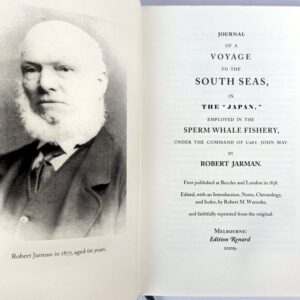

Journal of a Voyage to the South Seas, in the Japan,
AU$275.00 Read MoreAdd to cartRobert Jarman
Melbourne: Edition Renard, 2009.employed in the Sperm Whale Fishery, under the Command of Capt. John May. First published at Beccles and London in 1838. Edited, with an Introduction, Notes, Chronology, and Index, by Robert M. Warneke, and faithfully reprinted from the original. Deluxe limited edition of 70 numbered copies within the overall limitation of 200 copies for sale. A new edition of the very rare account first published in two issues in 1838 and until now never reprinted – see FORBES 1104, also BAGNALL 2685 and FERGUSON 2526 (and 2526a). Robert Jarman, the son of a printer at Beccles, joined the crew as a young man of twenty years on a whaling voyage to the South Seas in 1831. During the next three to four years young Robert’s forecastle jottings were transformed into a lively and well-crafted tale. The primary theme is the hard, unrelenting search for whales, reflected in Jarman’s methodical recording of encounters with other whalers and elaborated with graphic descriptions of the excitements and dangers of whaling with the inevitable accidents, injuries, and tragic deaths. After cruising the Japan Sea, the ship reached the Hawaiian Islands at the end of October 1832 and anchored at Honolulu. “The author noted 18 whalers in port. He describes the harbor and the method by which ships were towed in, and the Honolulu Fort, and the town and its native people” (Forbes). He tells also of surviving gales and near disaster when the Japan was dismasted in a hurricane, which forced the stricken ship to Sydney for extensive repairs. Jarman gives an interesting account of Sydney, with perceptive comments on convicts and their management and the Aboriginals and their customs including the use of the boomerang. Subsequently the ship cruised around Rotuma, the Fiji Islands and New Zealand before returning to England. Along the way Jarman gives accounts of visits to bays and islands to trade for fresh provisions, and of longer stays at various ports for wood, water and to benefit the crew. A welcome respite from the rigors and grinding repetition of shipboard life, Jarman was obviously captivated by those of the natives who were friendly, and he perceptively and sympathetically described their modes of life, customs, and the effects of European intercourse and colonization. The scope and appeal of this book is enhanced by some lengthy passages on natural history, including observations on the social behaviour of sperm whales and encounters with sharks, other fish and birds. Because of several chance but pertinent events he was able to include commentaries on several dramatic episodes of Pacific maritime history, such as the Bligh mutiny and its aftermath, and recent massacres of ships crews by islanders — a constant fear for lightly-armed visiting whalers.
-
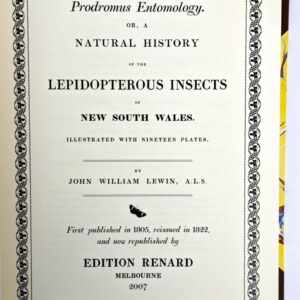
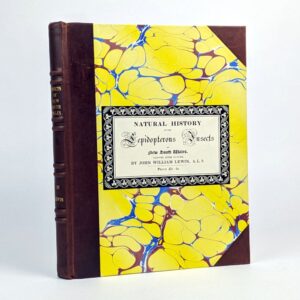
Prodromus Entomology. A Natural History of the Lepidopterous Insects of New South Wales
AU$925.00 Read MoreAdd to cartJohn William Lewin
Melbourne: Edition Renard, 2007.One of 70 numbered copies (from a total edition of 212 copies) bound in an exact facsimile binding in the style of the later superior issue of the second edition, complete with plain interleaves and hand-marbled sides. A new edition of one of the earliest books about Australian natural history, reproducing the text and illustrations of the two earlier editions, together with historical, bibliographical, and publication notes by Julien Renard. The first two editions being bibliographical rarities and extremely difficult to obtain, Renard also provides a census table of known copies.
-
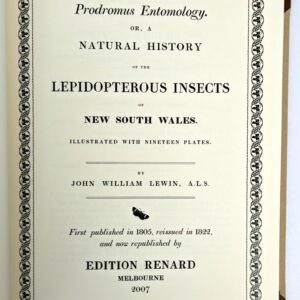
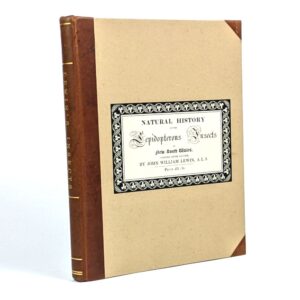
Prodromus Entomology. A Natural History of the Lepidopterous Insects of New South Wales
AU$660.00 Read MoreAdd to cartJohn William Lewin
Melbourne: Edition Renard, 2007.One of 70 numbered copies (from a total edition of 212 copies) bound in the style of the first issue of the second edition of 1822. A new edition of one of the earliest books about Australian natural history, reproducing the text and illustrations of the two earlier editions, together with historical, bibliographical, and publication notes by Julien Renard. The first two editions being bibliographical rarities and extremely difficult to obtain, Renard also provides a census table of known copies.
-
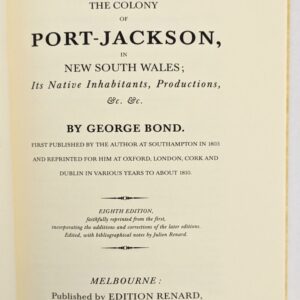
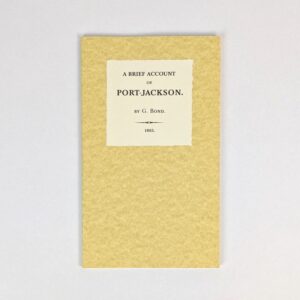
A Brief Account of the Colony of Port-Jackson,
AU$75.00 Read MoreAdd to cartGeorge Bond; Julien Renard
Melbourne: Edition Renard, 2005.in New South Wales; Its Native Inhabitants, Productions, &c. &c. By George Bond. First published by the Author at Southampton in 1803 and reprinted for Him at Oxford, London, Cork and Dublin in various Years to about 1810. Eighth Edition, faithfully reprinted from the first, incorporating the additions and corrections of the later editions. Edited, with bibliographical notes by Julien Renard. Limited Edition of 100 copies within a total edition of 200 numbered copies, and now first published since about 1810. All the original editions are of great rarity. No copies of the 2nd or 3rd editions have been recorded and the first (Southampton, 1803) edition is extremely rare, while the 4th (Oxford, 1806), 5th (London, 1809), 5th (i.e. 6th, Cork, undated), and 6th (i.e. 7th, Dublin, also undated), editions are all very rare. The work is of considerable importance as one of the few accounts of Hunter’s period as Governor. Hunter was dissatisfied with Bond’s behaviour in the colony and complained of him in dispatches. Hunter was instructed to return him to England and Bond left the colony under a cloud in 1800, but his narrative was evidently very popular. He gives an account of the operation of the convict system and the economic corruption in the colony, and describes early efforts to encourage free settlers. He includes also comments on the Aborigines and on the natural history of the colony, including much from first-hand experience. See FERGUSON 480; WANTRUP, pp. 91-3.
-
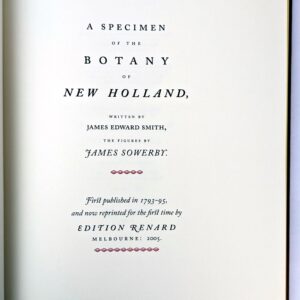
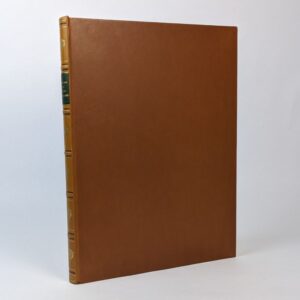
A Specimen of the Botany of New Holland
AU$1,150.00 Read MoreAdd to cartJames Edward Smith
Melbourne: Edition Renard, 2005.One of 60 numbered Large Paper copies (from a total edition of 212, of which 200 were for sale). A fine enhanced edition from the original edition Printed by J. Davis, Published by J. Sowerby, London, 1793-95 and never before reprinted. In this Deluxe issue the text is entirely reset with judicious use of colour and the fine coloured plates are enlarged by 25%. The text is accompanied by extensive bibliographical notes.
-
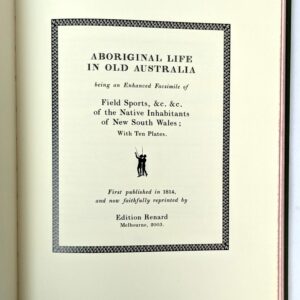
![Aboriginal Life in Old Australia, [Field Sports, &c. &c. of the Native Inhabitants of New South Wales]](https://www.thebookmerchantjenkins.com/wp-content/uploads/0033586-300x300.jpg)
Aboriginal Life in Old Australia, [Field Sports, &c. &c. of the Native Inhabitants of New South Wales]
AU$495.00 Read MoreAdd to cart[John Heaviside Clark]
Melbourne: Edition Renard, 2003.being an enhanced Facsimile of Field Sports, &c. &c. of the Native Inhabitants of New South Wales; With Ten Plates. First published in 1814, and now faithfully reprinted by Edition Renard. Limited to 200 numbered copies for sale, this being one of 125 copies of the Standard Edition. The text has been entirely reset in the recreated original types, faithfully matching the original edition which was the first separate work devoted to Aboriginal Australians. Included is an essay on the bibliography and publishing history of the work and interesting speculations on the text.
-
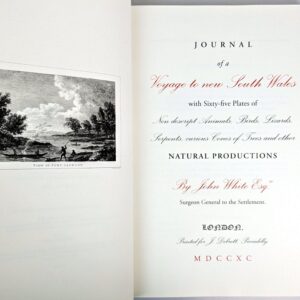
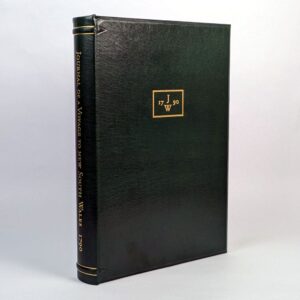
Journal of a Voyage to New South Wales
AU$3,250.00 Read MoreAdd to cartJohn White
Melbourne: Edition Renard, 2002.Edition of 212 numbered copies, 200 only for sale, this being one of 40 deluxe copies with the plates in both coloured and uncoloured states. This sumptuous new edition is reprinted with the text entirely reset in Garamond, attractively printed in black, red, and green, and the plates enlarged by 50%. The plates, by Sarah Stone, F. P. Nodder, and other fine artists comprise 29 of birds (including splendid parrots), 10 of reptiles and amphibians, 7 mammals (marsupials and the Dingo), 6 of fishes, 9 of plants (including magnificent Banksias), 2 of invertebrates, and 2 of Aboriginal weapons and artefacts. In the original edition the leaf Hh4 is cancelled in some copies with a variant text describing in the cancelled state a description of the Wattled Bee-Eater, or Merops, Female and in the uncancelled state a description of the male bird. Both texts have been reproduced here and there are some bibliographical and publishing notes appended. This was the first natural history book on Australia of any significance to be published after the arrival of the First Fleet and has never before been republished with the plates in colour. Edition Renard was awarded two Gold Medals at the 20th National Print Awards, and a Certificate of Manufacturing Excellence of the Victorian Manufacturers Hall of Fame for this book, the first publication under the imprint.
-
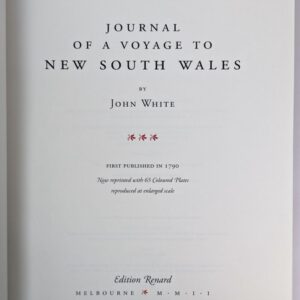
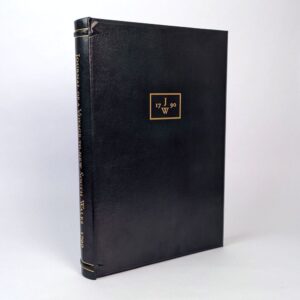
Journal of a Voyage to New South Wales
AU$2,375.00 Read MoreAdd to cartJohn White
Melbourne: Edition Renard, 2002.Edition of 212 numbered copies, 200 only for sale, this one of 150 numbered copies of the Standard Edition. This sumptuous new edition is reprinted with the text entirely reset in Garamond, attractively printed in black, red, and green, and the plates enlarged by 50%. The plates, by Sarah Stone, F. P. Nodder, and other fine artists comprise 29 of birds (including splendid parrots), 10 of reptiles and amphibians, 7 mammals (marsupials and the Dingo), 6 of fishes, 9 of plants (including magnificent Banksias), 2 of invertebrates, and 2 of Aboriginal weapons and artefacts. In the original edition the leaf Hh4 is cancelled in some copies with a variant text describing in the cancelled state a description of the Wattled Bee-Eater, or Merops, Female and in the uncancelled state a description of the male bird. Both texts have been reproduced here and there are some bibliographical and publishing notes appended. This was the first natural history book on Australia of any significance to be published after the arrival of the First Fleet and has never before been republished with the plates in colour. Edition Renard was awarded two Gold Medals at the 20th National Print Awards, and a Certificate of Manufacturing Excellence of the Victorian Manufacturers Hall of Fame for this book, the first publication under the imprint.
-
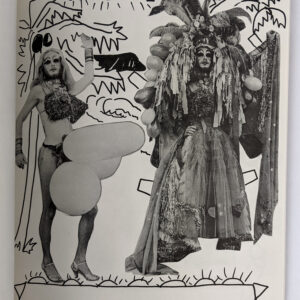

The Official Cockettes T.M. Paper Doll Book
AU$180.00 Read MoreAdd to cartJohn Flowers; Clay Geerdes
San Francisco: Last Gasp, 1971.Paper dolls of the acid drag hippie theatre troupe, Cockettes, all dressed in their finest drag for their New York City trip.
-

Archer Magazine 19: The Pleasure Issue
AU$19.00 Read MoreAdd to cartAmy Middleton; Roz Bellamy
Melbourne: Archer Magazine, 2023.A magazine about sex, gender and identity. The Pleasure Issue. Contributors include: Joan Nestle, Katia Ariel, Erin Riley, Caitlin McGregor, Lauren French, Vex Ashley, Hini Hanara, Bebe Oliver, Patrice Capogreco, Euphemia Russell, Jessamyn Stanley, Pro Dommes Alani and Danielle, and an image editorial by Hailey Moroney.
-
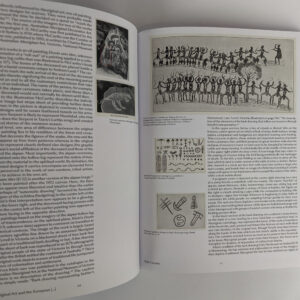
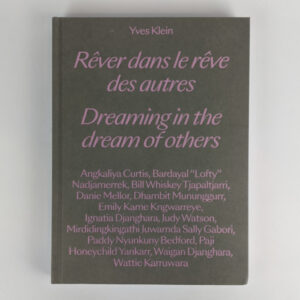
Yves Klein: Dreaming in the Dream of Others
AU$125.00 Read MoreAdd to cartGeorges Petitjean
Milan: Mousse Publishing, 2022.This volume presents works by 13 Aboriginal artists alongside pieces by the influential French artist Yves Klein (1928-62), whose early childhood art and writings reflect an interest in prehistorical Aboriginal motifs. Artists include: Angkaliya Curtis, Bardayal Lofty Nadjamerrek, Bil Whiskey Tjapaltjarri, Danie Mellor, Dhambit Mununggurr, Emily Kame Kngwarreye, Ignatia Djanghara, Waigan Djanghara, Judy Watson, Mirdidingkingathi Juwarnda Sally Gabori, Paddy Nyunkuny Bedford, Paji Honeychild Yankarr, and Wattie Karruwara.
-
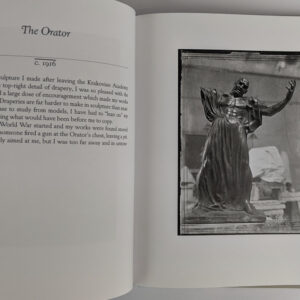
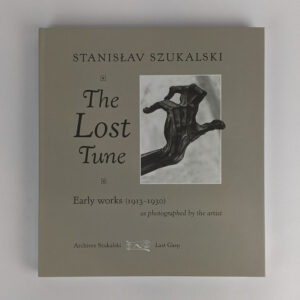
The Lost Tune: Early Works (1913-1930) as photographed by the artist
AU$90.00 Read MoreAdd to cartStanislav Szukalski
San Francisco: Last Gasp, 2023.The photos in this volume were printed from the original glass negatives taken by the artist between 1913 and 1930. This is the second edition of Stanislav Szukalski’s The Lost Tune. The first edition was produced to complement the exhibit Szukalski: The Lost Genius, held between August 3 and October 22, 1990 at the Polish Museum of America in Chicago. With the addition of over a dozen photos, this new edition is a collection of prints of almost all of Szukalski’s existing glass negatives. The negatives have been scanned in high resolution and meticulously reproduced and printed. This edition has a larger format than the first edition, and includes a comprehensive article on the historical and artistic merit of Szukalski’s early photography. (publisher’s blurb)
